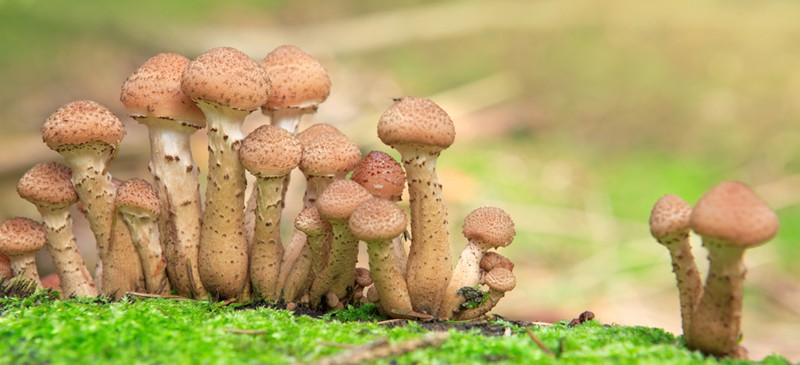This Dr. Axe content is medically reviewed or fact checked to ensure factually accurate information.
With strict editorial sourcing guidelines, we only link to academic research institutions, reputable media sites and, when research is available, medically peer-reviewed studies. Note that the numbers in parentheses (1, 2, etc.) are clickable links to these studies.
The information in our articles is NOT intended to replace a one-on-one relationship with a qualified health care professional and is not intended as medical advice.
This article is based on scientific evidence, written by experts and fact checked by our trained editorial staff. Note that the numbers in parentheses (1, 2, etc.) are clickable links to medically peer-reviewed studies.
Our team includes licensed nutritionists and dietitians, certified health education specialists, as well as certified strength and conditioning specialists, personal trainers and corrective exercise specialists. Our team aims to be not only thorough with its research, but also objective and unbiased.
The information in our articles is NOT intended to replace a one-on-one relationship with a qualified health care professional and is not intended as medical advice.
Can You Eat Honey Mushroom? (Or Is This Fungus Toxic?)
May 16, 2019

Found growing in temperate regions around the globe, the honey mushroom doubles as a dangerous pathogen to plants yet an edible form of fungi that works well in recipes ranging from pasta to soup. Thanks to its impressive antioxidant content, the honey mushroom has also been shown to have cancer-fighting, blood sugar-lowering properties that could be therapeutic in the treatment of several chronic conditions. Plus, it also happens to be one of the largest living organisms on Earth, with some colonies spanning several miles in diameter.
So what is this medicinal mushroom, how can you identify it and how can it impact your health? Keep reading for everything you need to know about this interesting form of fungi, plus some other fun honey mushroom facts.
What Is Honey Mushroom?
The honey mushroom is a genus composed of several types of parasitic fungi that grow on wood. Armillaria, which is the honey mushroom scientific name, is made up of about 10 different species of mushrooms, including Armillaria mellea, Armillaria ostoyae and Armillaria tabescens.
Where does honey fungus grow?
Honey mushrooms can be found growing in temperate regions around the globe, including areas like Asia, Europe and North America. The mushrooms feed on dead plant material and can cause fungal root rot in trees, which spreads through root-like structures known as rhizomorphs.
Typically, these species have long life spans and form some of the largest living organisms in the world. Although the honey mushroom size can vary quite a bit, the largest fungal colony in the world is actually of the species Armillaria solidipes, which spans 2.4 miles across the Blue Mountains in Oregon.
Some types, such as the ringless honey mushroom, are edible and considered a delicacy in many parts of the world. However, they must be cooked prior to consumption, as they are actually considered poisonous when raw.
How to Identify Honey Fungus
There are plenty of honey mushroom identification guide websites and resources out there with information on how to identify mushrooms and which ringless honey mushroom lookalikes you should be aware of.
Honey mushrooms can be identified by the stems, which grow together in tight clusters and can range in color from white to yellowish-brown. Depending on the species, some types have a distinct ring under the stem while others are ringless. They can grow in clusters of up to 50 mushrooms, although you’re much more likely to spot them in groups of 10–20. Many people also wonder: Does honey fungus smell? In addition to their unique appearance, honey mushrooms also have a slightly acidic odor that can come in handy when identifying mushrooms.
When mushroom hunting, it’s important to look out for deadly galerina, a honey mushroom lookalike that can actually be toxic to humans. Compared to the honey mushroom, deadly galerina is slightly smaller and usually dark brown in color. It also has tan gills and a convex cap that slowly starts to flatten with maturity.
Health Benefits and Uses
1. Rich in Antioxidants
Honey fungus mushroom is a great source of antioxidants, which are compounds that help neutralize disease-causing free radicals and protect against chronic disease. In fact, in vitro studies show that several specific compounds isolated from honey mushrooms can be effective at scavenging free radicals and preventing oxidative damage to cells.
2. Could Help Fight Cancer Cell Growth
While more research is still needed to determine how honey mushrooms may affect cancer in humans, some studies show that it could help block the growth and spread of cancer cells in vitro. For example, one in vitro study found that armillarikin, a compound found in Armillaria mellea, was able to kill off liver cancer cells. Meanwhile, other research shows that it could even be therapeutic against leukemia and esophageal cancer cells as well.
3. Protects Brain Health
One of the most promising uses for the honey mushroom medicinal properties is its potential to enhance brain function and protect against neurodgenerative disorders. In fact, one animal model in Oxidative Medicine and Cellular Longevity found that extracts obtained from Armillaria mellea were effective at improving neuron function, preventing cell damage and decreasing the buildup of proteins in the brain that have been linked to Alzheimer’s disease.
4. May Stabilize Blood Sugar
High blood sugar can come with serious consequences, ranging from impaired headaches and increased thirst to impaired wound healing and vision problems. According to one 2015 in vitro study, Armillaria mellea extracts exhibited powerful antioxidant and blood sugar-lowering properties, suggesting that they could be used to develop dietary supplements and pharmaceutical products aimed at treating diabetes.
5. Versatile and Delicious
Besides their many health benefits, honey mushrooms are tasty, versatile and easy to enjoy in a number of different recipes. They have a slightly sweet yet earthy flavor and a distinct, chewy texture. They can be sautéed for a simple side dish or combined with other veggies to make a nutritious stir-fry. Alternatively, you can use these mushrooms in pasta dishes, soups or stuffings to give your favorite recipes a kick of extra flavor and antioxidants.
Honey Fungus Treatment
What causes honey fungus? Does honey fungus always spread? And can you kill honey fungus? If you find this type of mushroom growing in your garden, you probably have a lot of questions about how you can get it under control and stop it from spreading to protect your plants.
Because there’s no chemical treatment currently available for honey fungus, you need to remove it manually to help prevent its spread. Simply remove and dispose of any affected plants, including the roots. For large trees, this may require you to contact a professional who is experienced with excavating trees. Then, be sure to thoroughly disinfect any tools that may have come in contact with the fungus using either bleach, hydrogen peroxide or rubbing alcohol to ensure that you won’t spread the fungus any further.
Ensuring healthy growing conditions can help prevent honey fungus from growing in the future. Plants should get enough water and light, plus have plenty of healthy soil and space to help avoid future infection. You can also choose to select plants that are more resistant to honey fungus instead, such as bamboo, oak, beech and yew trees.
Recipes
There are plenty of unique and interesting ways to add honey mushroom to your diet, from soups to stir-fries and beyond. Here are a few simple yet delicious honey mushroom recipe ideas that you can start experimenting with to help get you going:
- Pickled Honey Mushrooms
- Honey Mushroom Soup
- Heirloom Squash Ravioli with Honey Mushrooms and Sage
- Sautéed Honey Mushrooms
Risks and Side Effects
Honey mushrooms should always be cooked prior to consumption. They are unsafe to eat raw and can cause serious side effects. Some people may not be able to tolerate honey mushrooms even after cooking and may experience symptoms like nausea, cramps and stomach pain. If you experience any side effects after consuming honey mushrooms, discontinue use immediately. It’s also not advisable to consume alcohol with the mushrooms, and certain species should not be eaten within 12–24 hours of drinking alcohol to prevent negative symptoms.
When foraging for mushrooms, be careful of honey mushroom lookalikes such as deadly galerina, a type of mushroom similar in appearance that can actually be toxic. Be sure to review the galerina vs. honey mushroom images carefully to familiarize yourself with the differences, and don’t consume mushrooms if you’re not completely sure that they’re safe.
Read Next: Morel Mushrooms: 5 Health Benefits, Plus How to Hunt for Them!










